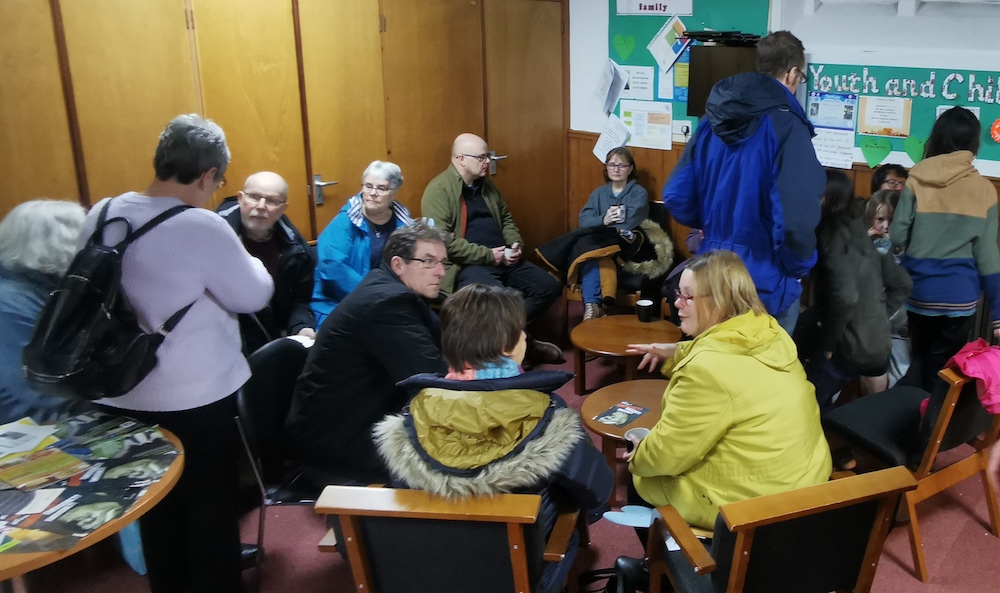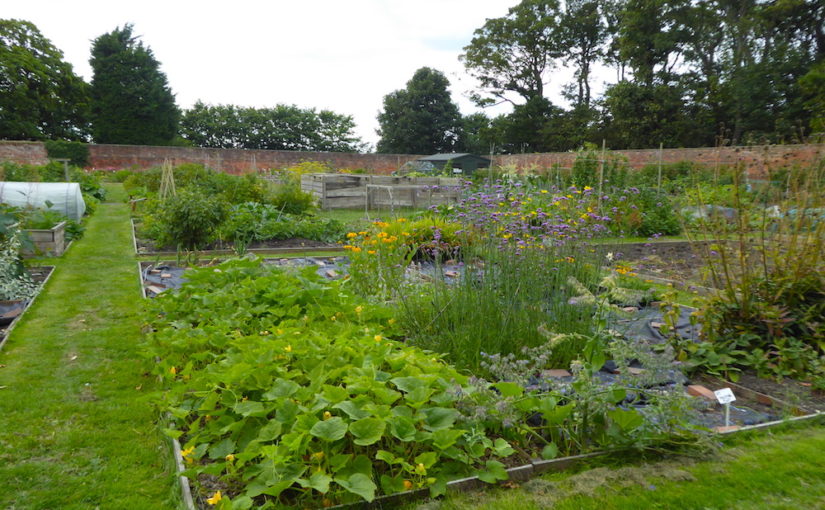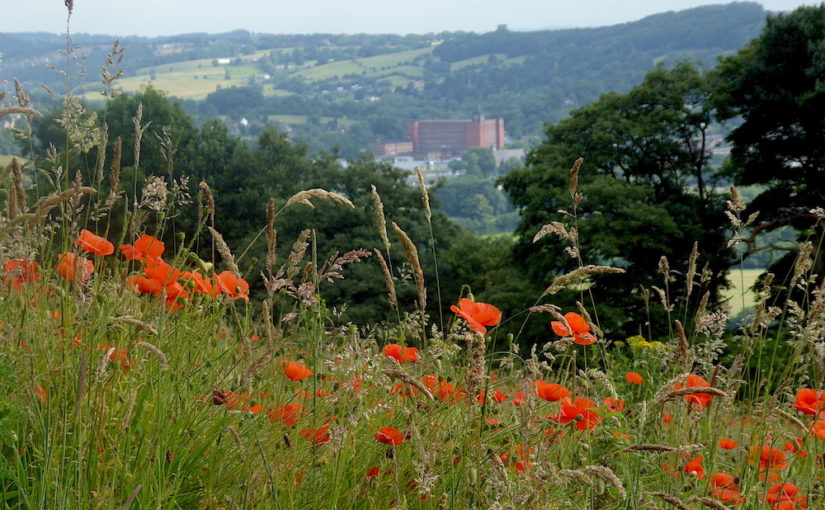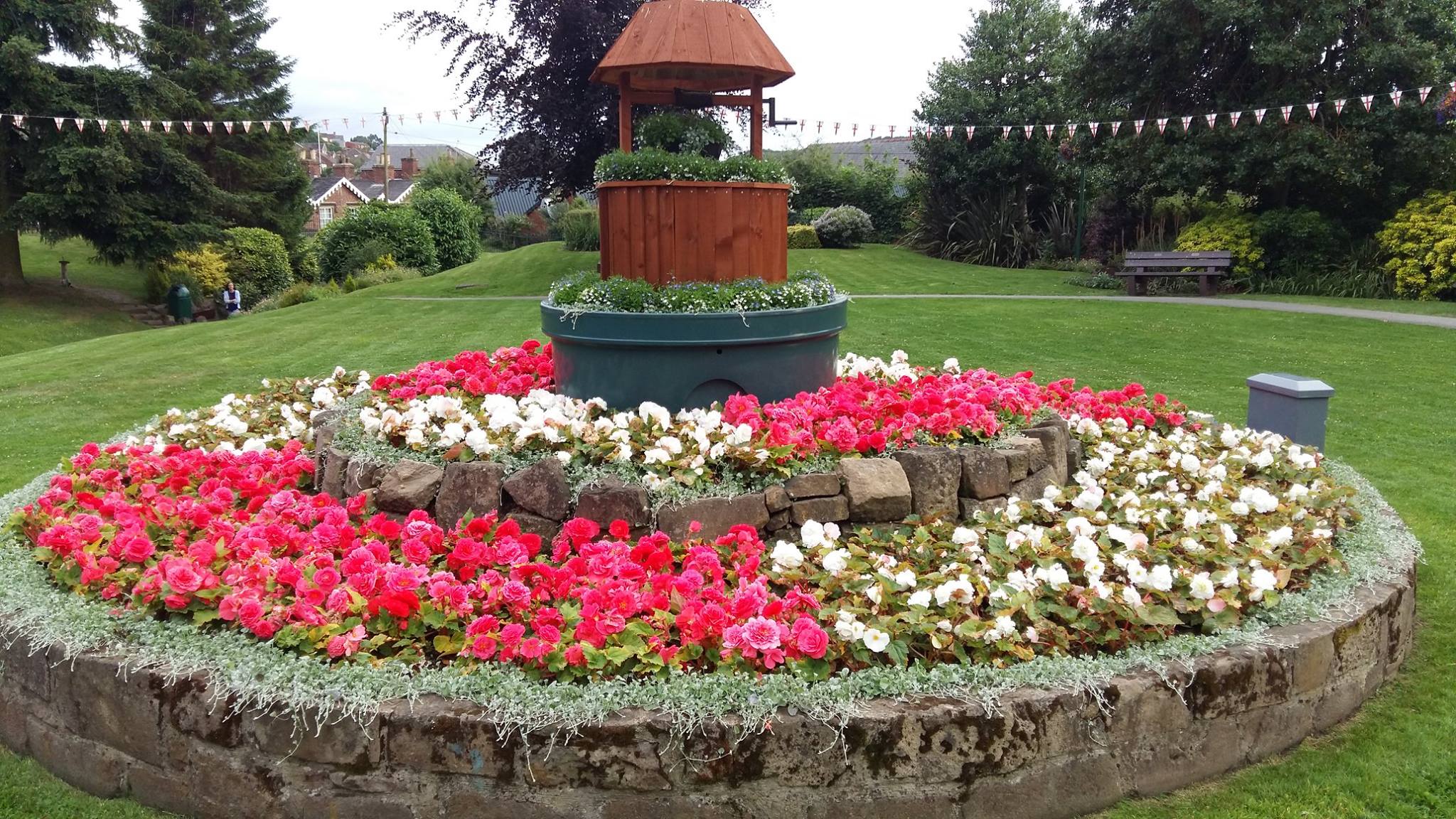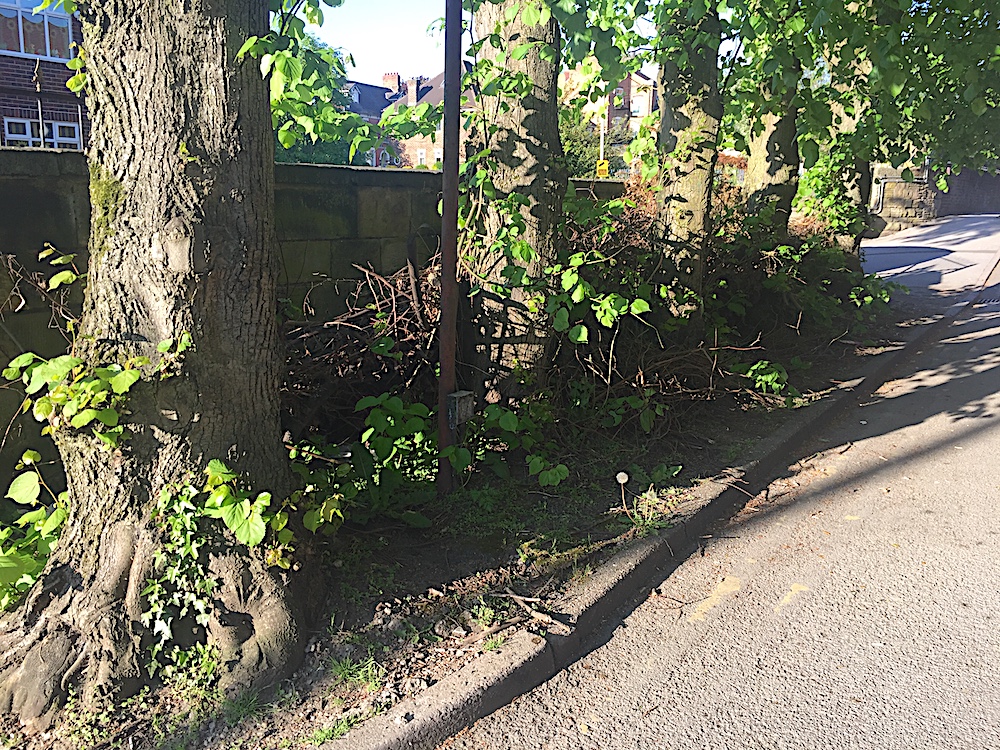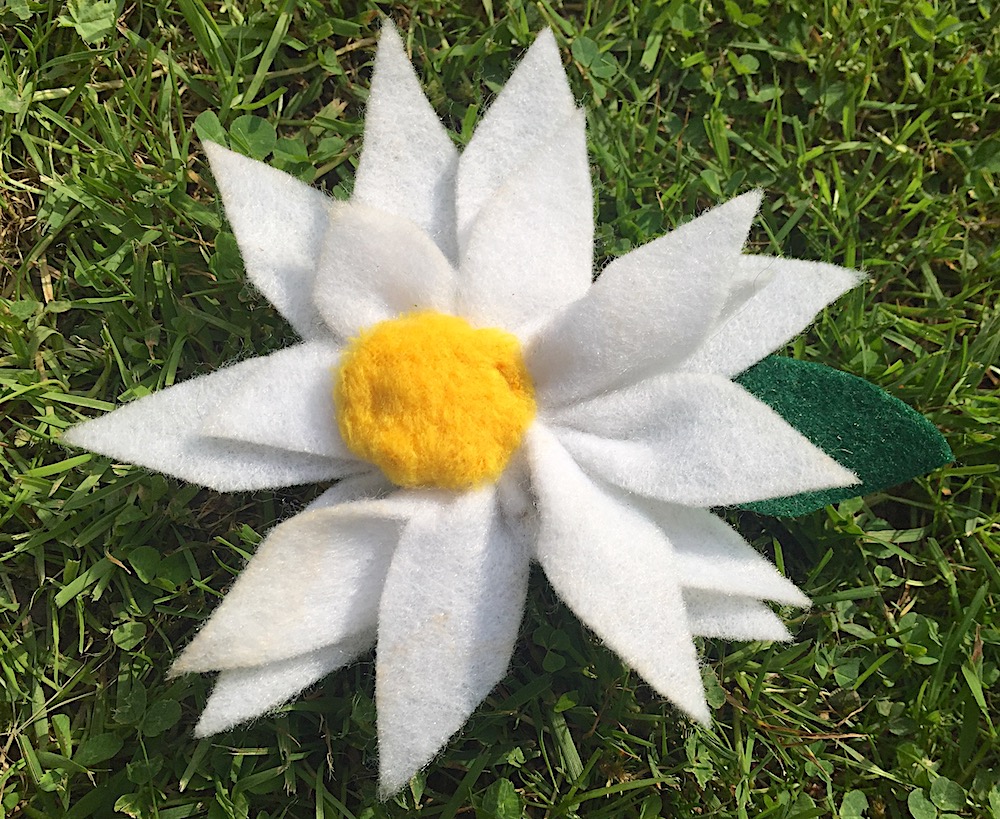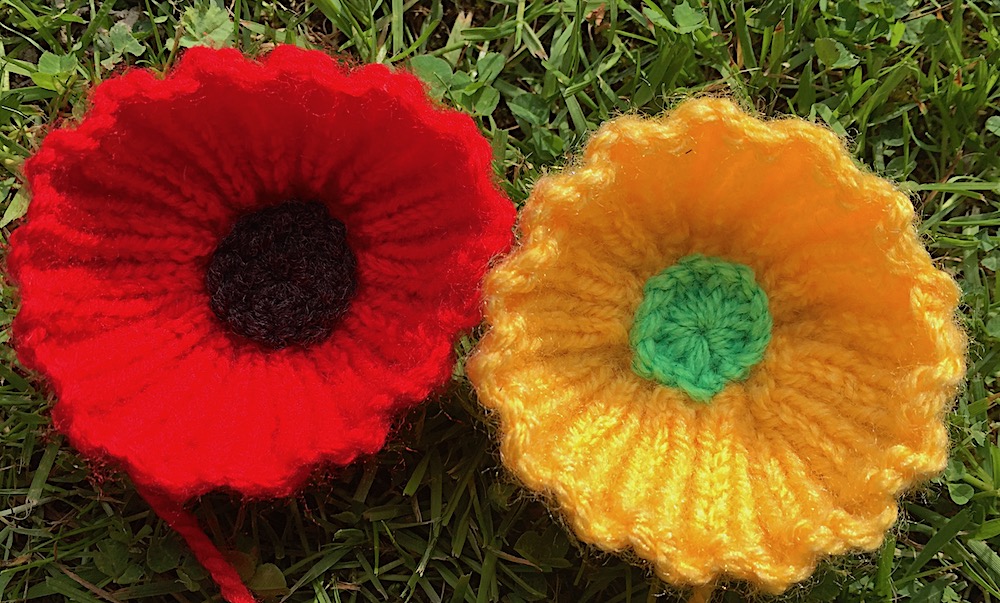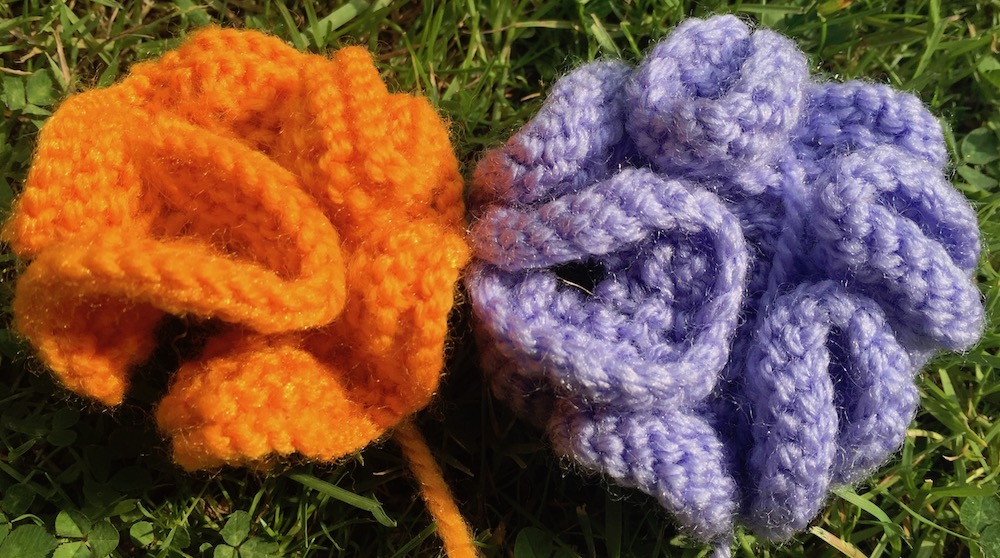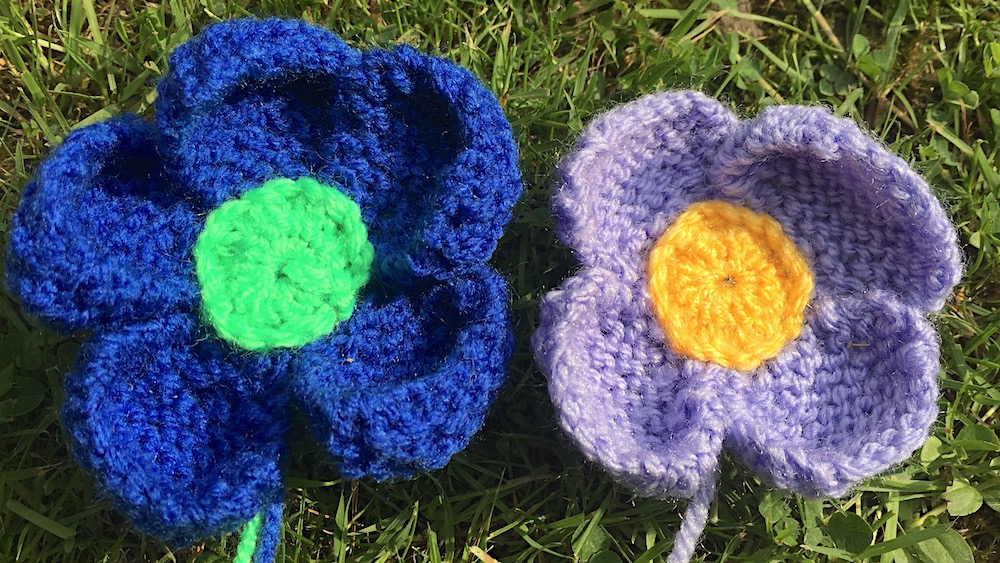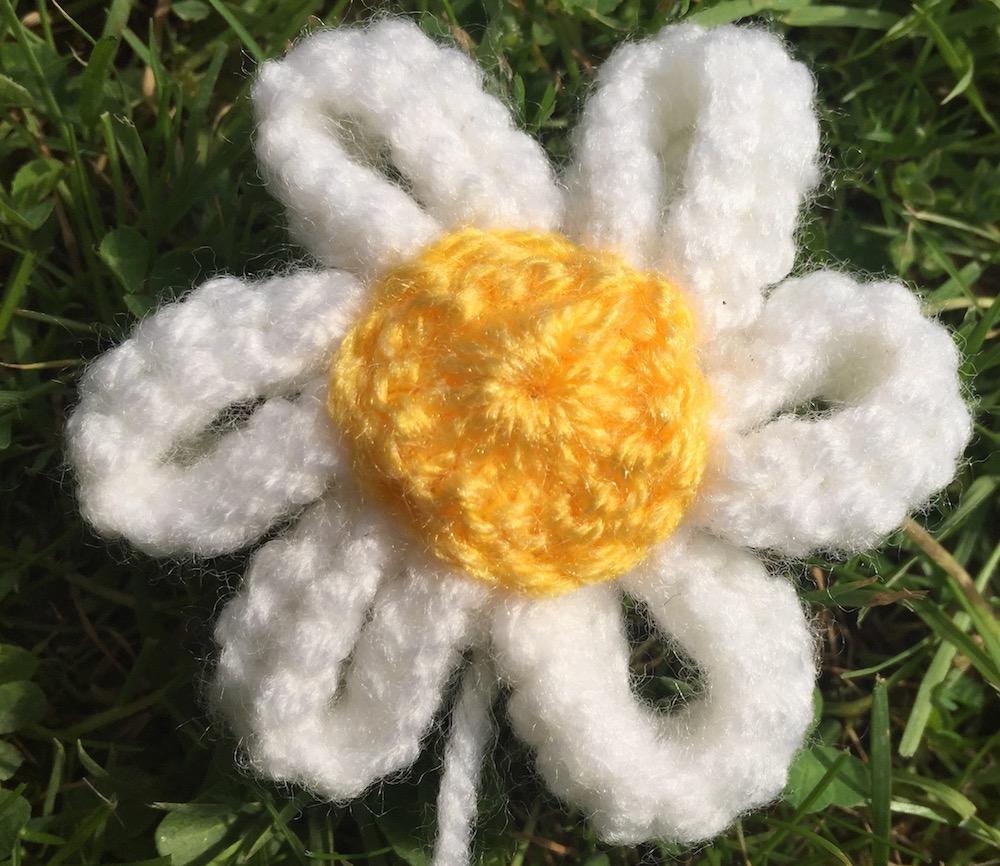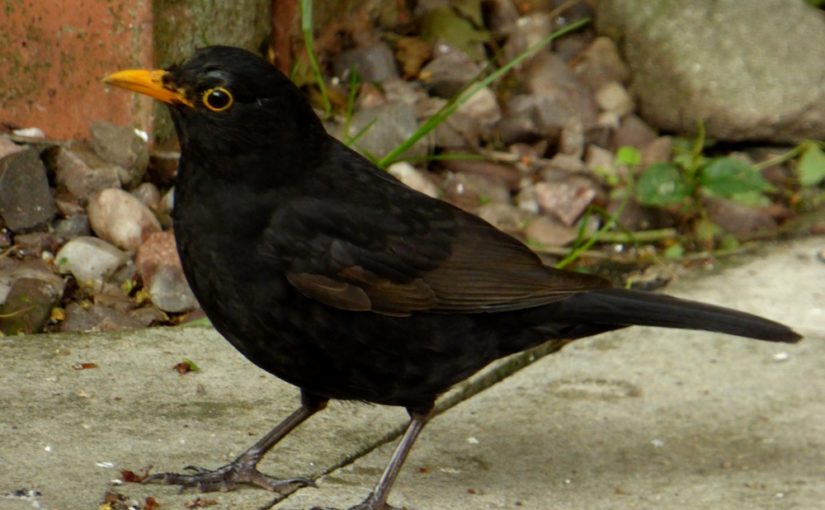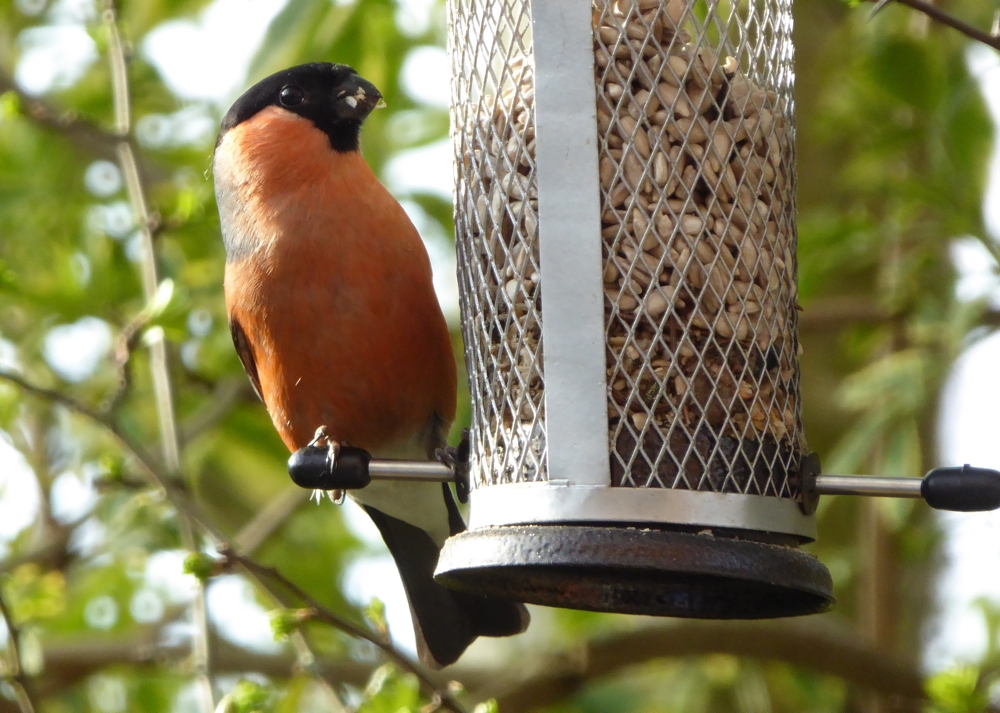I have to admit that most of my life I have not taken too much notice of bees. I have not been afraid of them because I believed they wouldn’t want to sting me and only do so as a last resort, unlike wasps. My ignorance was so bad that I didn’t realise that there were bumblebees and honey bees. I thought that all bees were black and yellow striped and fluffy looking. When I heard about bee decline and how important they were for pollinating and therefore our survival, I started to take more notice. I was amazed to discover there are several hundred different species of bee in the UK alone and that not all bees make honey, but all I believe collect pollen.
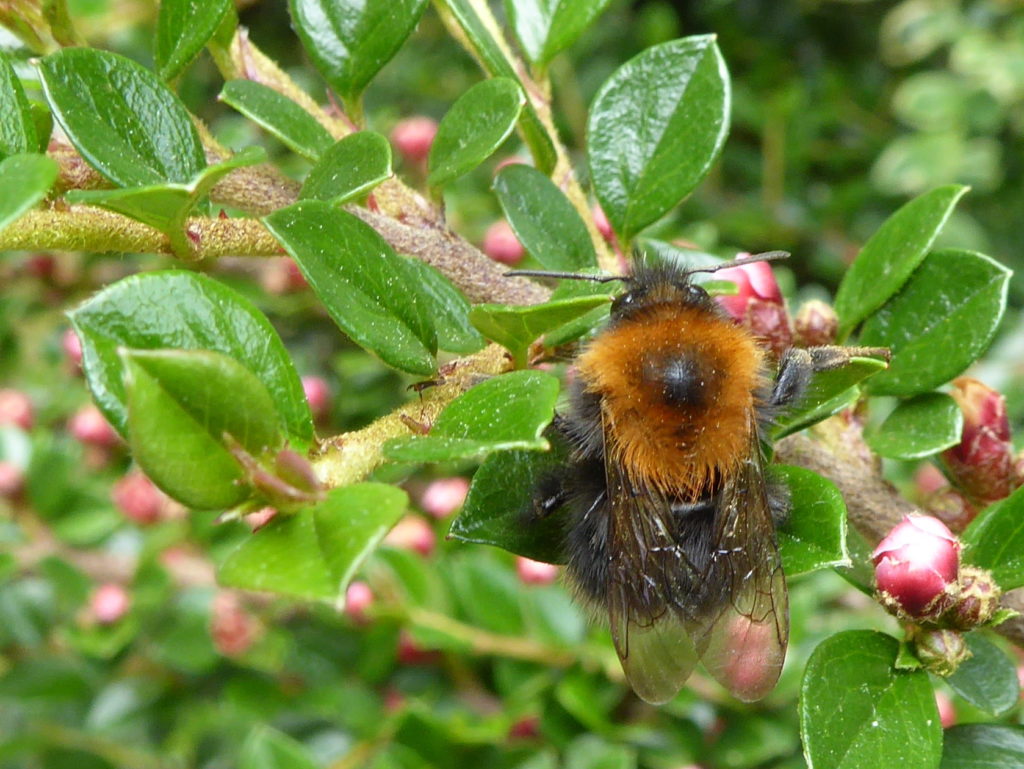
There is so much information today on the internet that anyone who wants to find out more has no excuse. Sites such as the different Wildlife Trusts , Countryfile , Blooms for Bees , and the Bumblebee Conservation Trust , to name just a few. It can be rather daunting however as within one species of bee the Queen, the Workers and the Male bees can be different sizes and have colour variations. As to really get to grips with bees would take a lifetime, I decided that with the lovely weather and restrictions on movement during lockdown, I would try to discover what bees visit my garden and learn to recognise them.
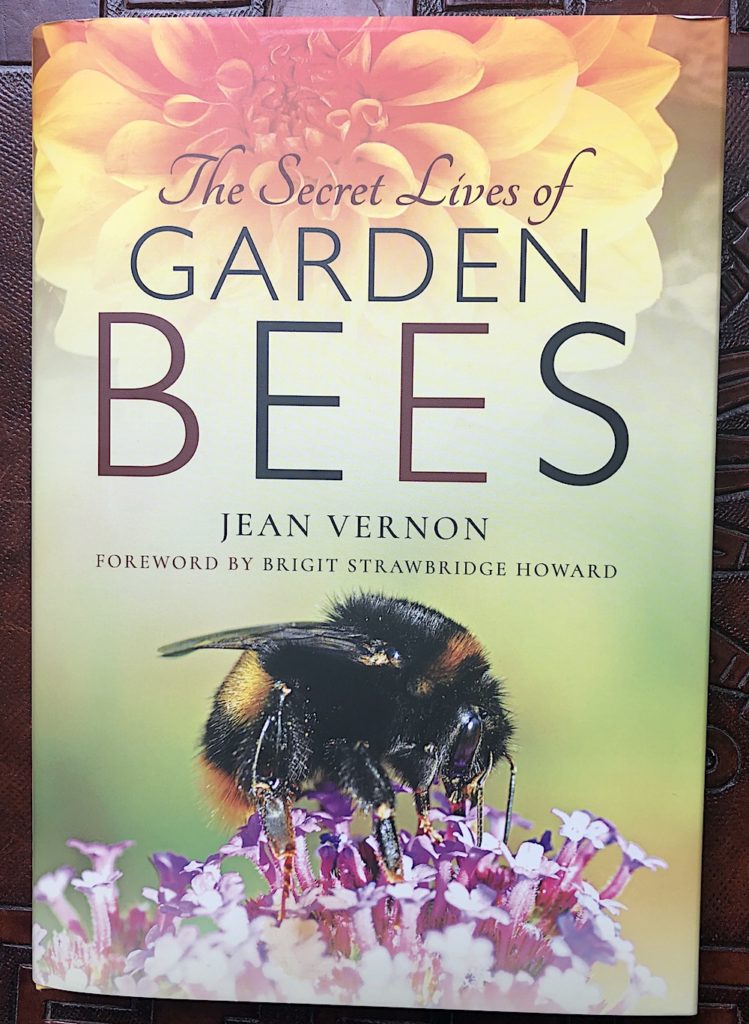
I have also been reading some really useful books on the subject such as The Secret Lives of Garden Bees by Jean Vernon, hot off the press this spring. It is a most beautifully produced book with fantastic photographs, perfect for anyone of any age who would like to get to know a bit more about the world of bees. There is a book review here, Kids of the Wild.
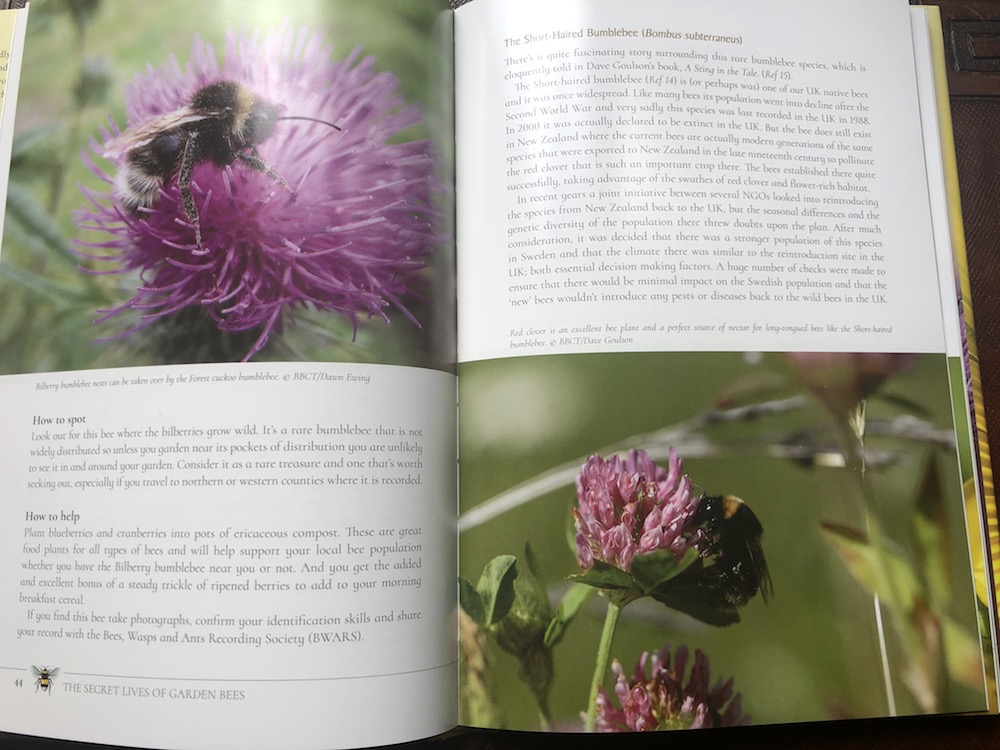
I have also listened on Audible to the book by Brigit Strawbridge Howard, Dancing with Bees, a journey back to nature. Brigit writes about her love of the natural world and how important it can be for our mental health. She gives us a lot of very interesting information about bees and other garden wildlife. This book was published in Summer 2019. More information can be found here on Brigit’s Blog. I can thoroughly recommend both of these books for a beginner who would like to know more about the world of bees.
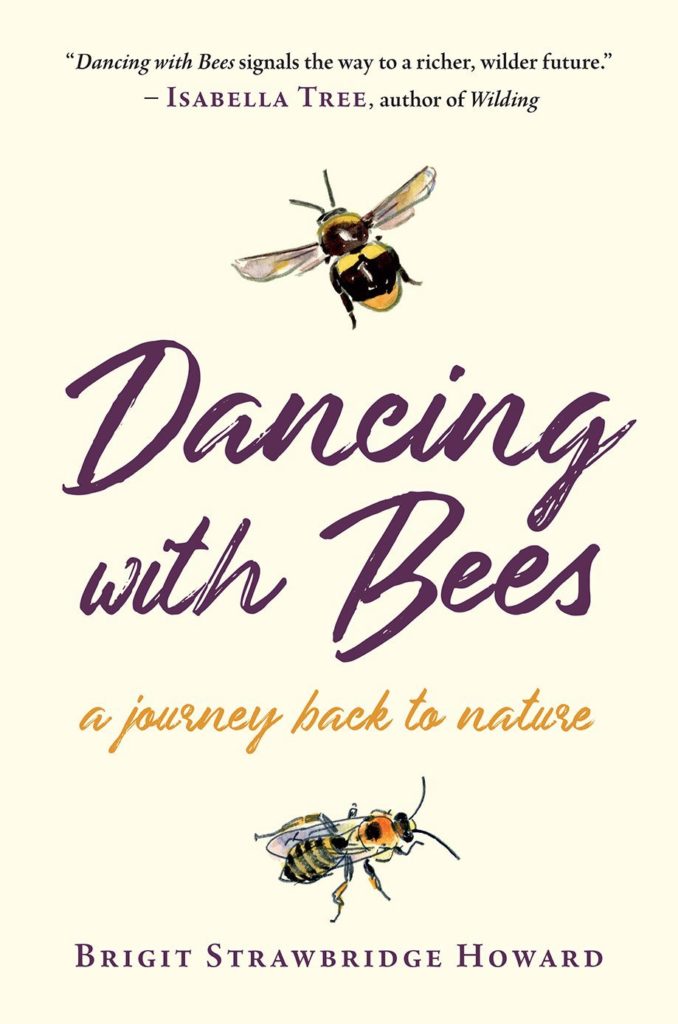
Anyway to get back to my garden bees. So far I have discovered four different species which I now hope I would be able to recognise again. The first and probably the one I have seen most of is a new comer to our UK gardens, the Tree Bumblebee. This bee has been very obliging and I have managed to take a few photographs.
I have designed a knitted bee that has a resemblance to the Tree bumblebee. I will add this pattern to my next blog post for anyone who would like to try knitting one. The Tree Bumblebee has only been here since about the year 2000 but does seem to like the flowers we have in our garden. More information can be found HERE
The second species I have noticed in the garden is the Buff-tailed bumblebee. This one is a bit confusing as apparently it is the Queen whose tail is buff coloured but the workers have white tails. They have two yellow stripes not three like the Garden bumblebee. I noticed one of these bees on the cotoneaster but it would not stay very still for me to photograph consequently my picture is very blurred.
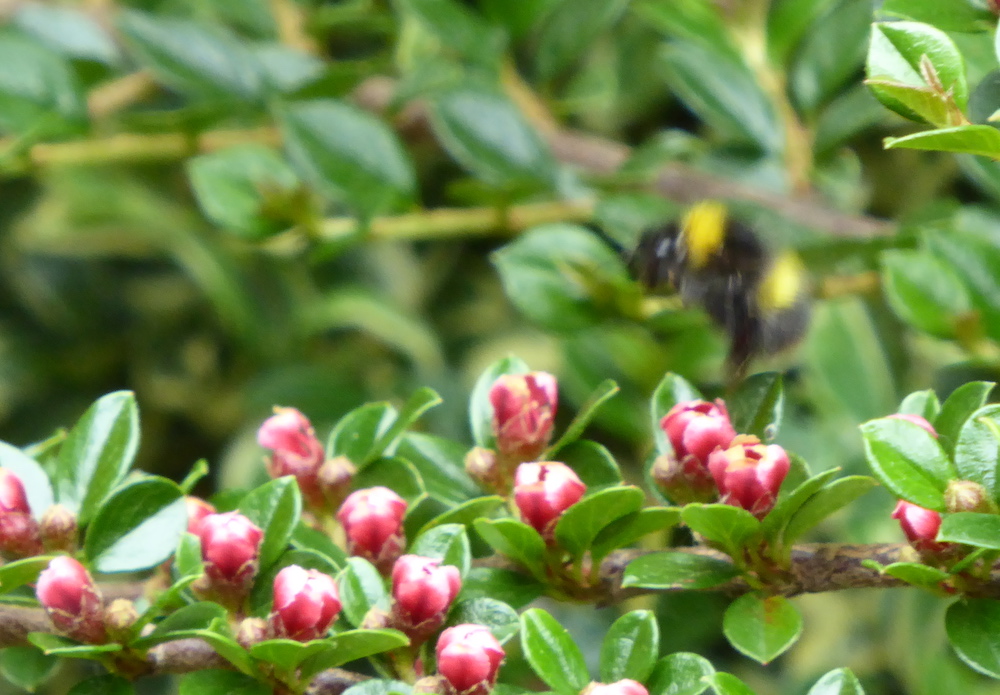
I found a bee lying on its back in our dining room, thinking it was dead I got a piece of kitchen roll to pick it up. When I put my hand near the bee it moved and clung onto the paper towel. I quickly took it outside and placed on some weigela flowers, the bee immediately moved into one of them. It spent about thirty minutes eating and resting before flying off. I believe this was a solitary bee called a mason bee. I have now bought a home for mason Bees and really hope someone moves in https://www.masonbees.co.uk
We also have some bees nesting under our shed but to be honest I am not sure what species they are but could be the Buff tailed. I have noticed a bee on our walks which seemed to like to burrow into hard ground and I think this may have been a Mining Bee.
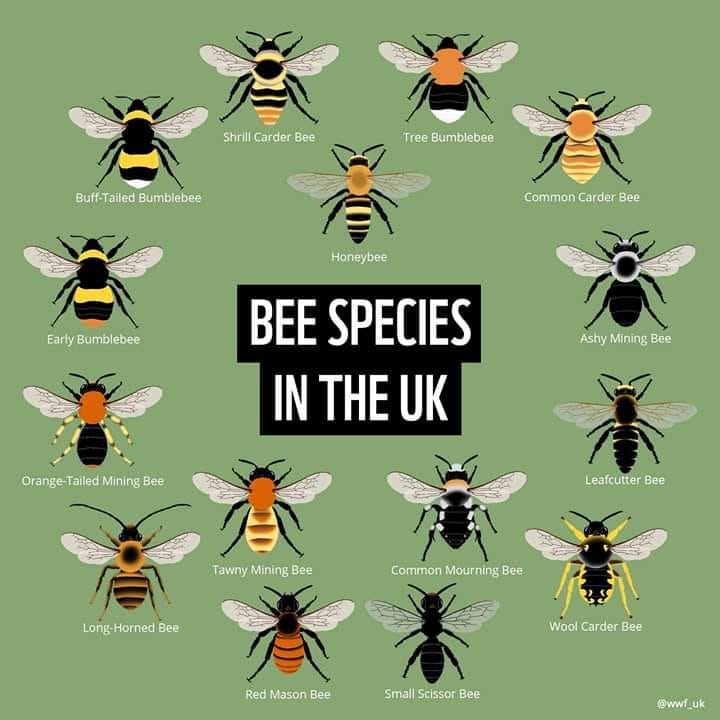
My next blog will have details of knitting your own Tree bumblebee or possibly bee species of your choice.
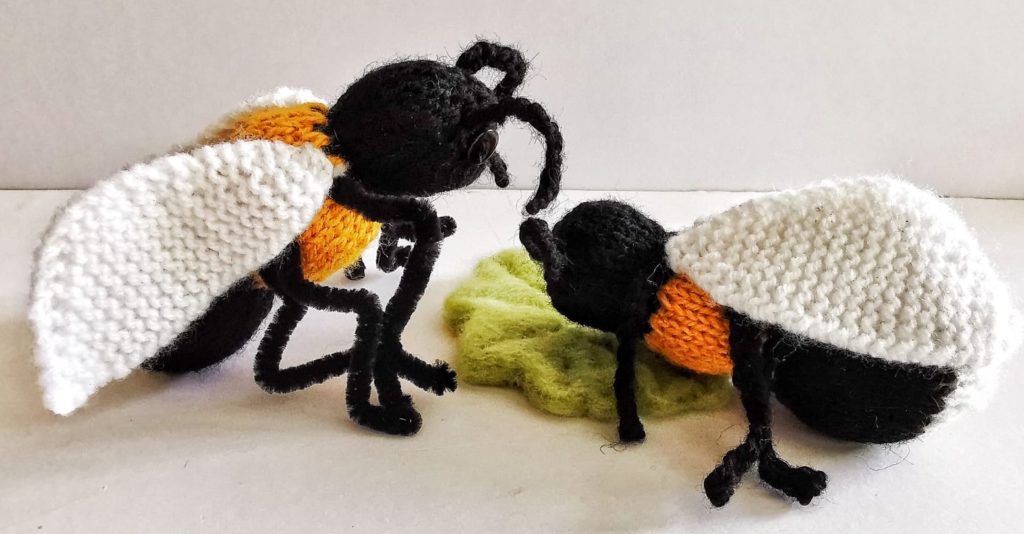
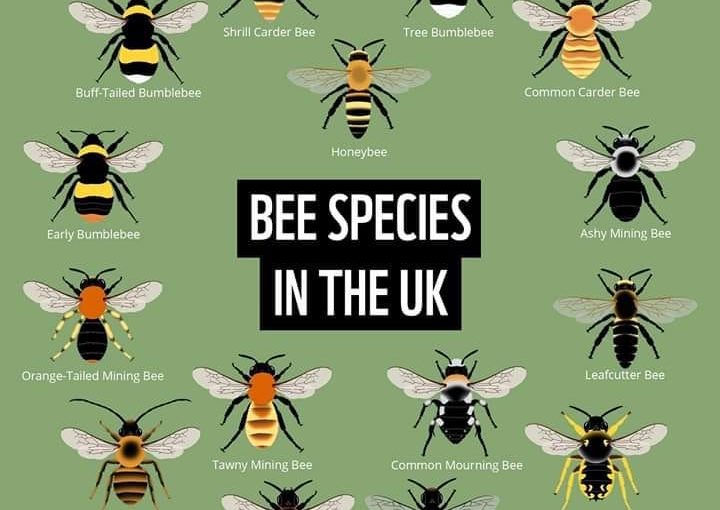
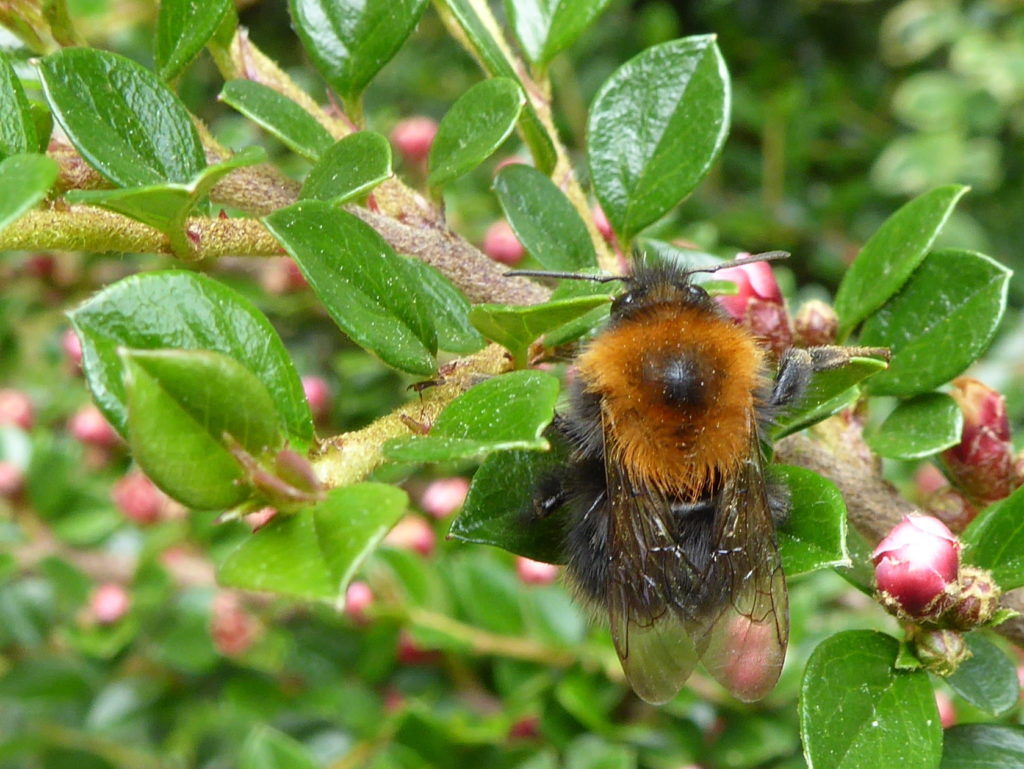
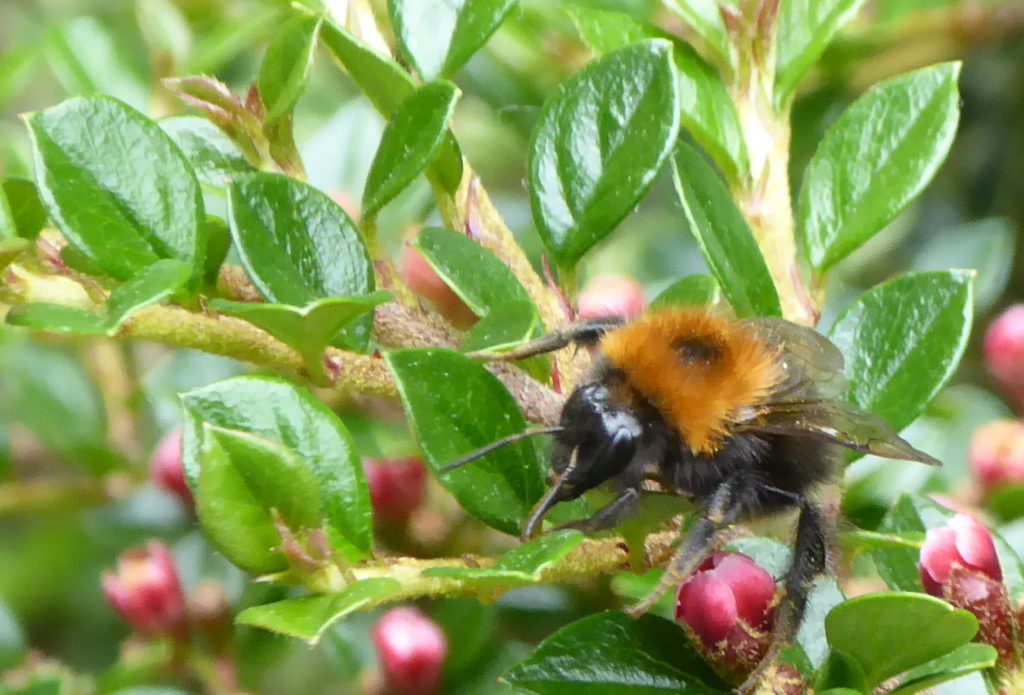
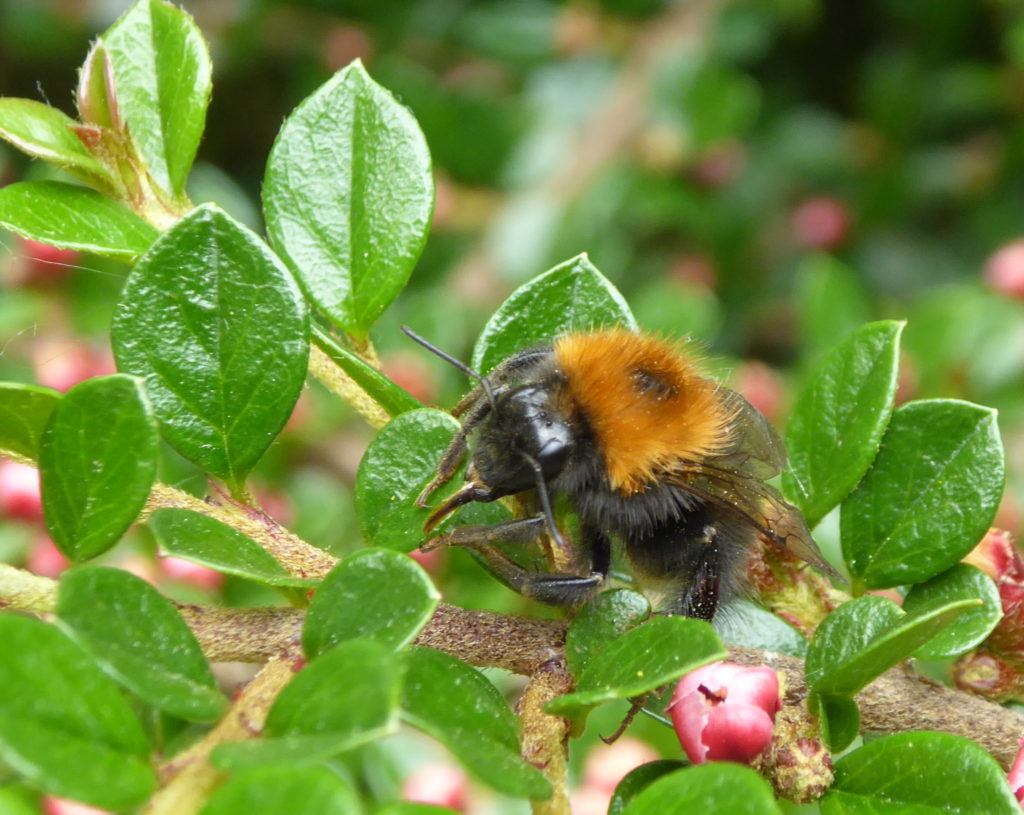
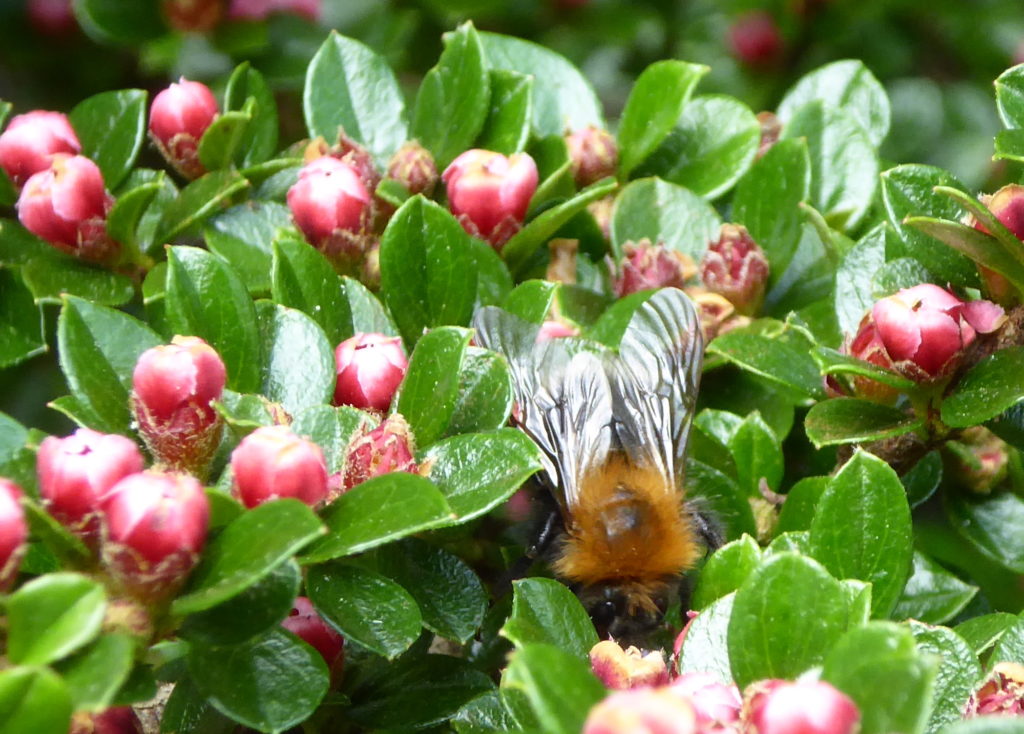
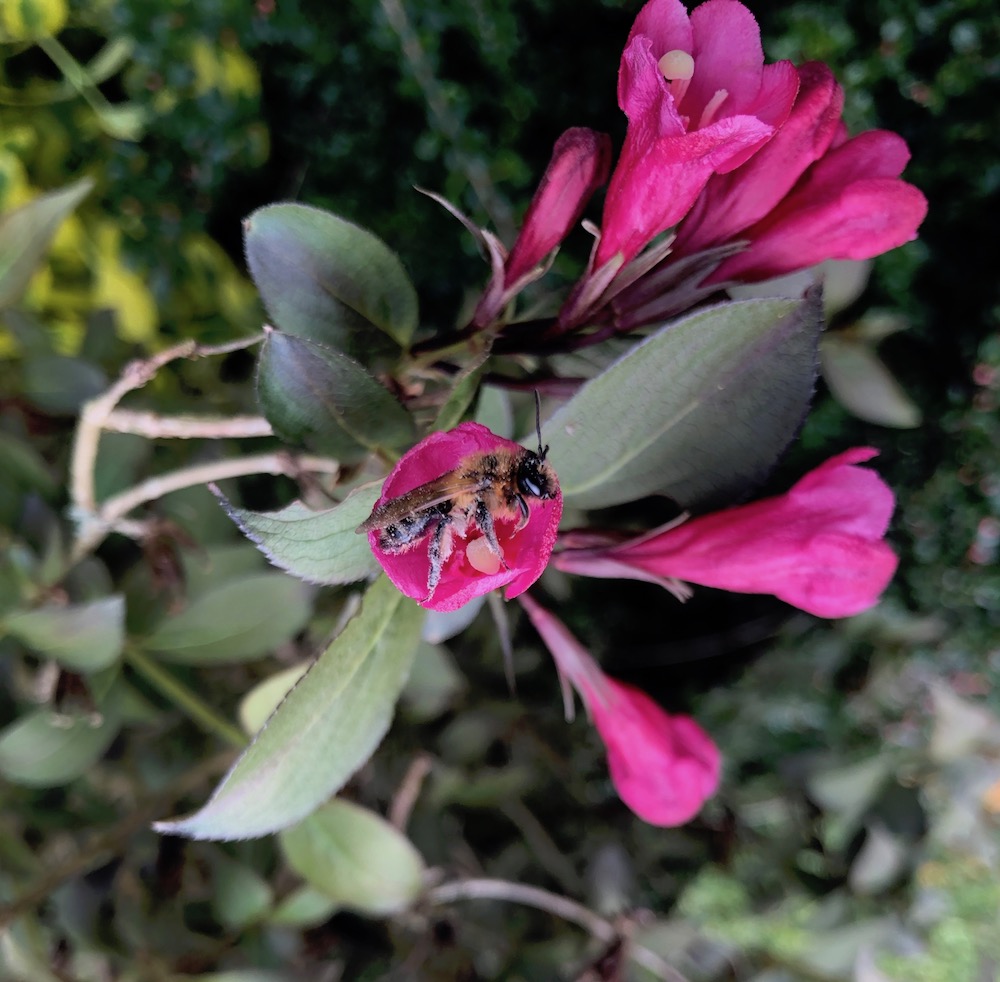
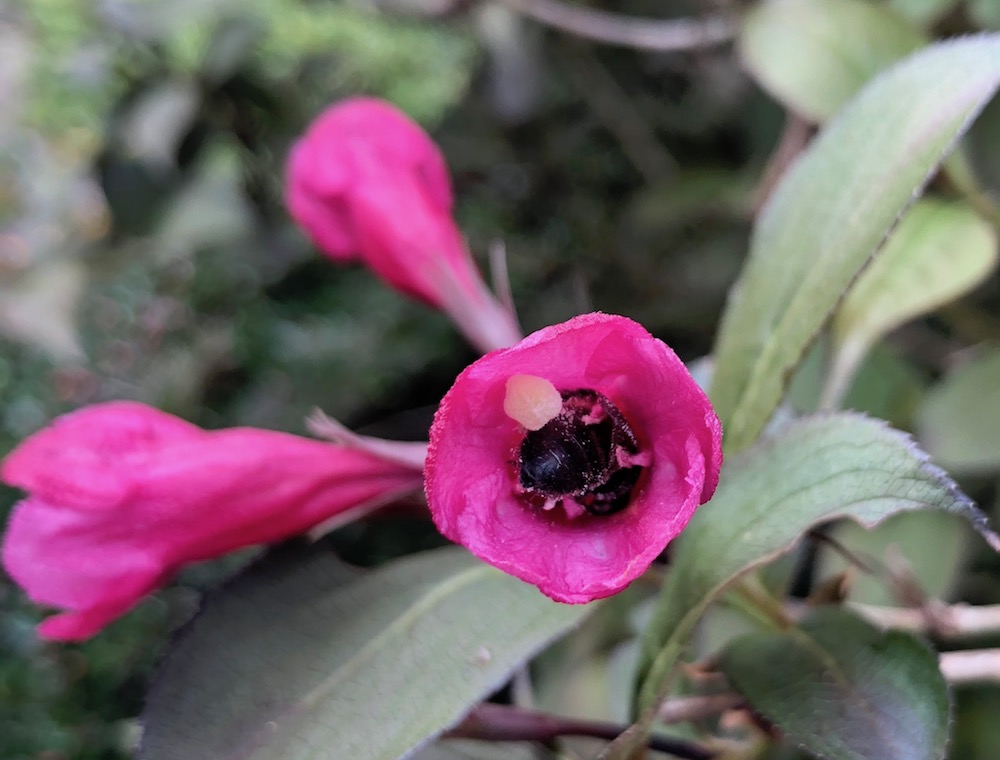
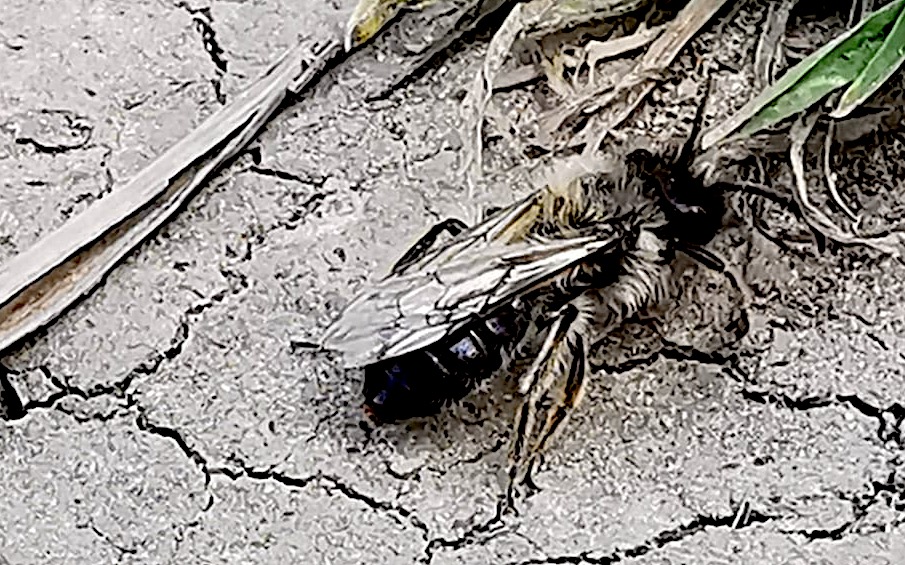
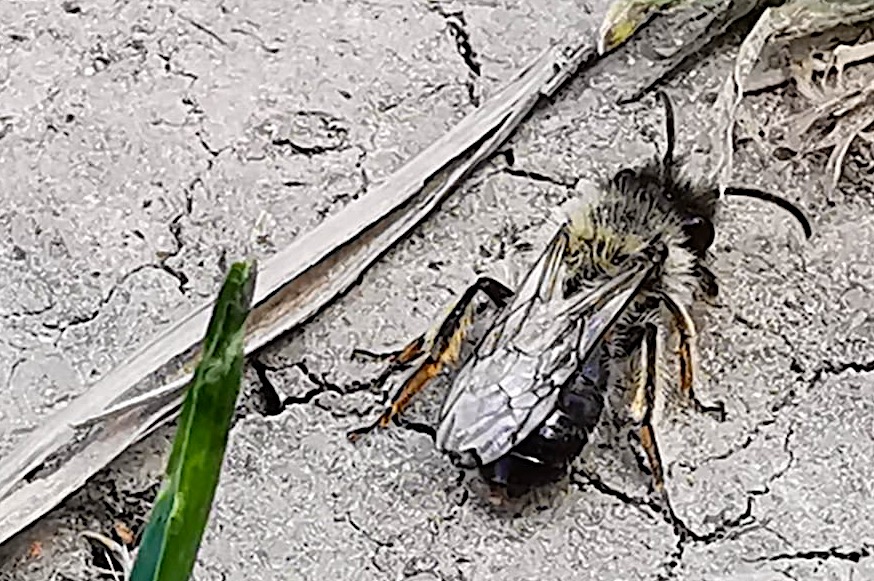
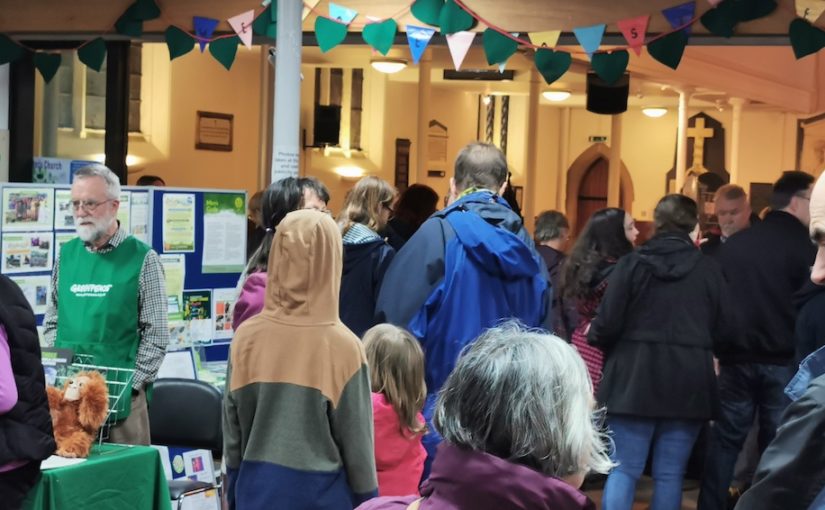
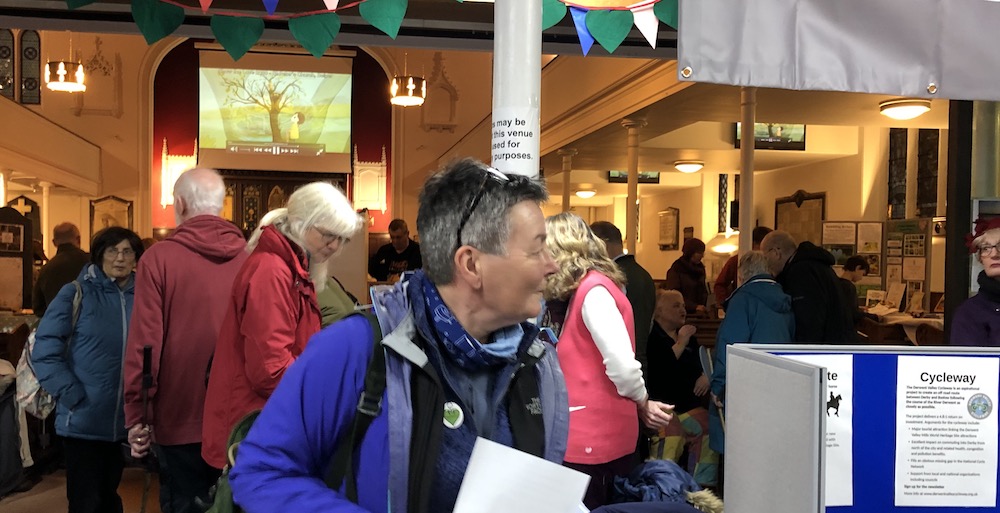 We are not all going to agree on all the issues but it is important to have conversations and then decide what we feel is our personal next step forward. Maybe the biggest thing we can do is consume less and consequently waste less, working towards saving both money and our planet.
We are not all going to agree on all the issues but it is important to have conversations and then decide what we feel is our personal next step forward. Maybe the biggest thing we can do is consume less and consequently waste less, working towards saving both money and our planet.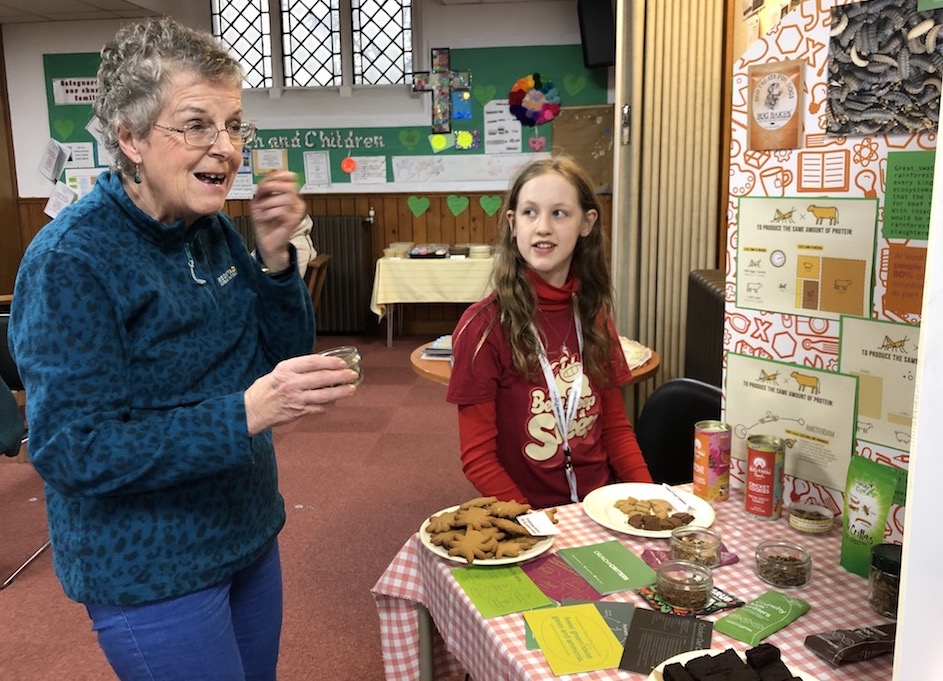 George with his
George with his 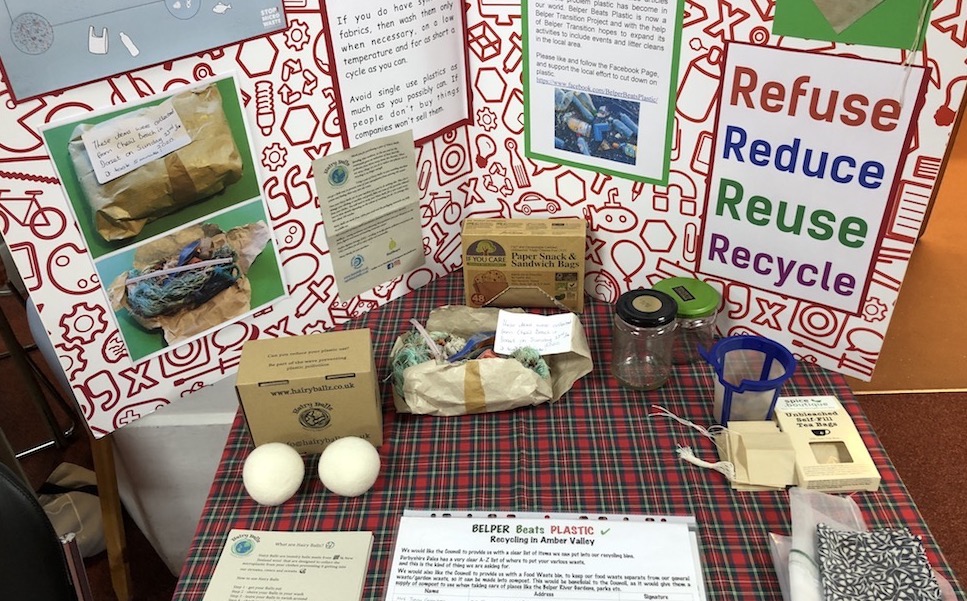

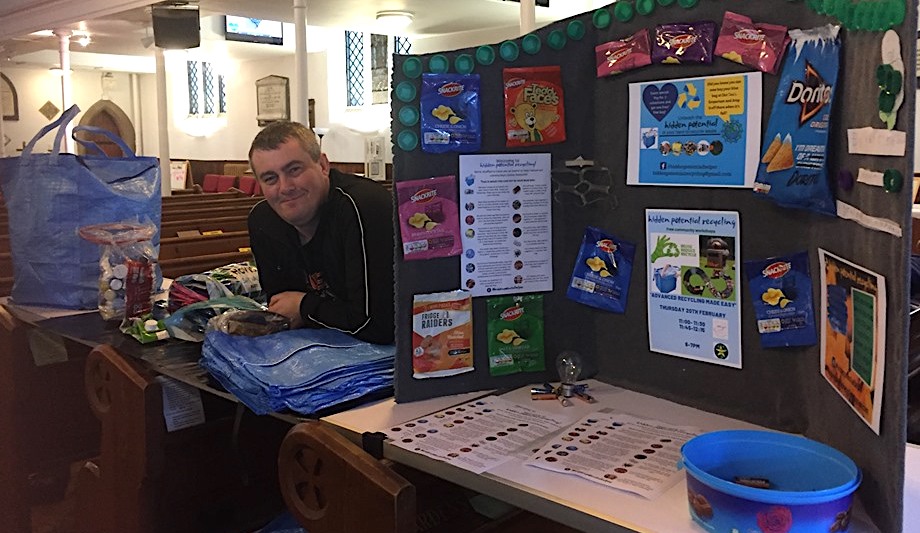
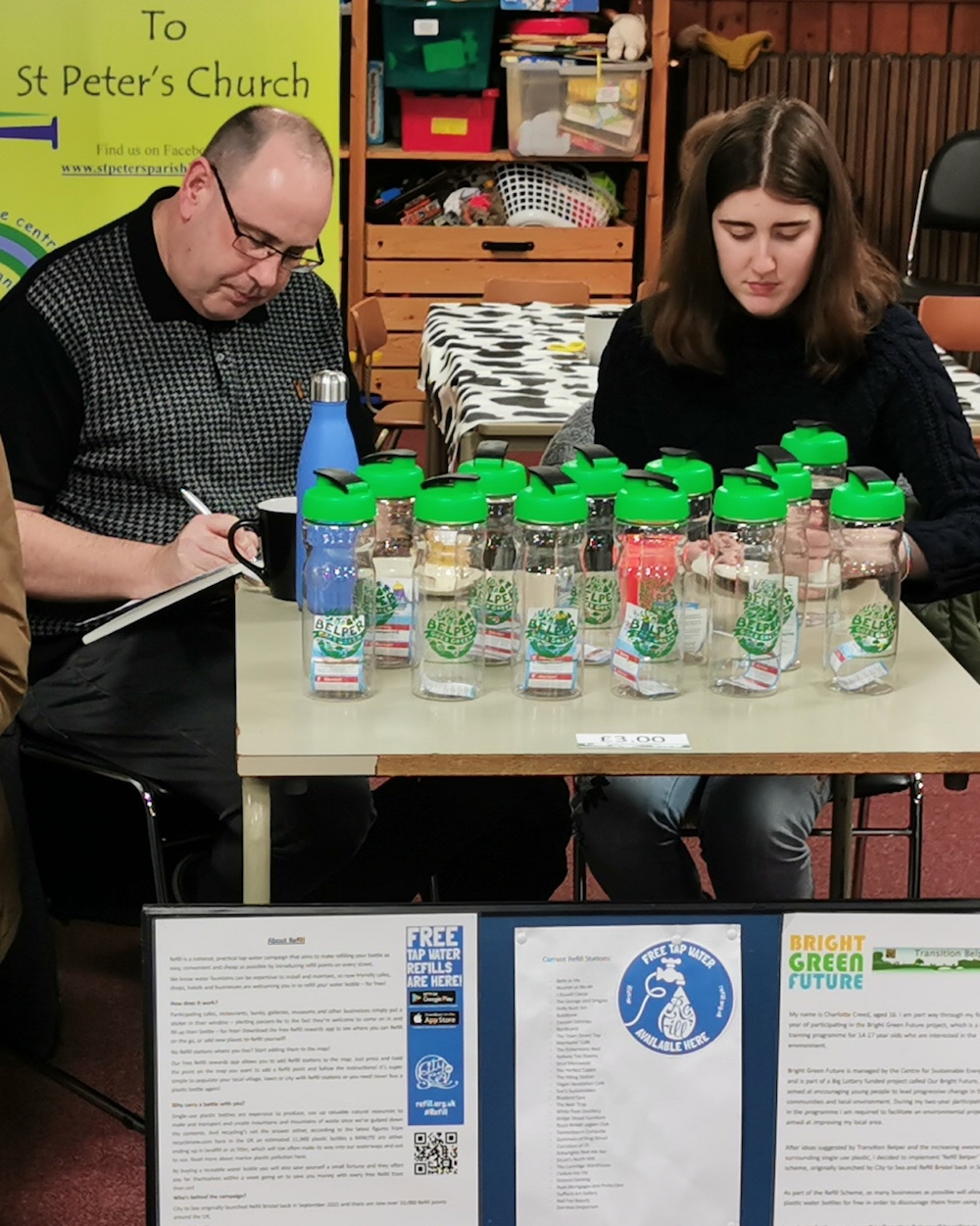
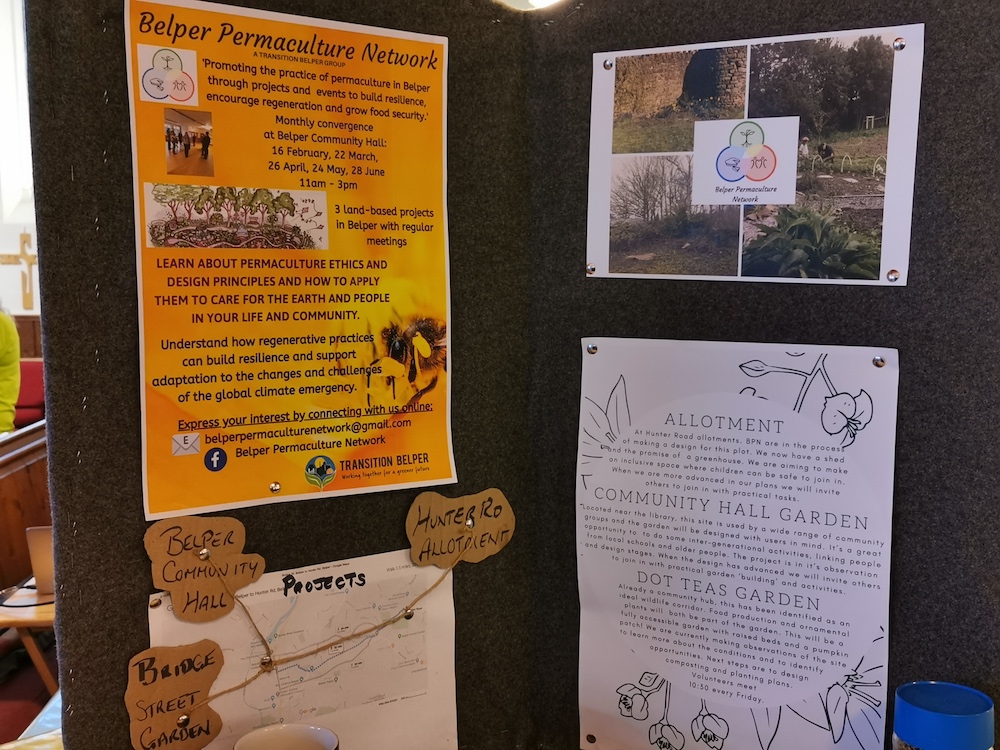
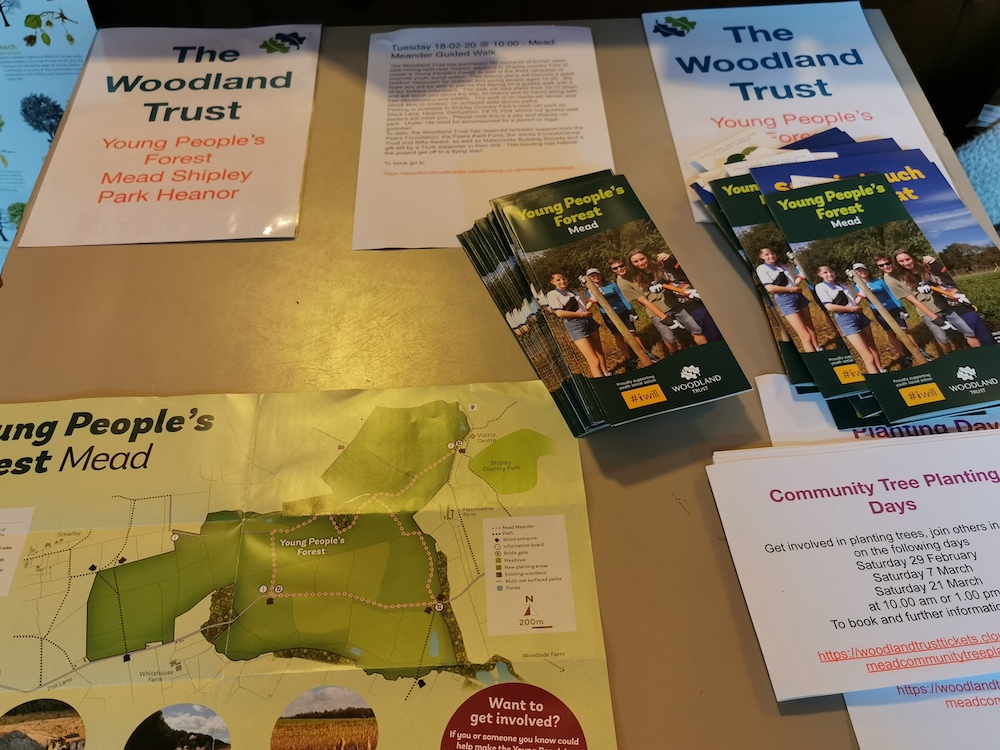
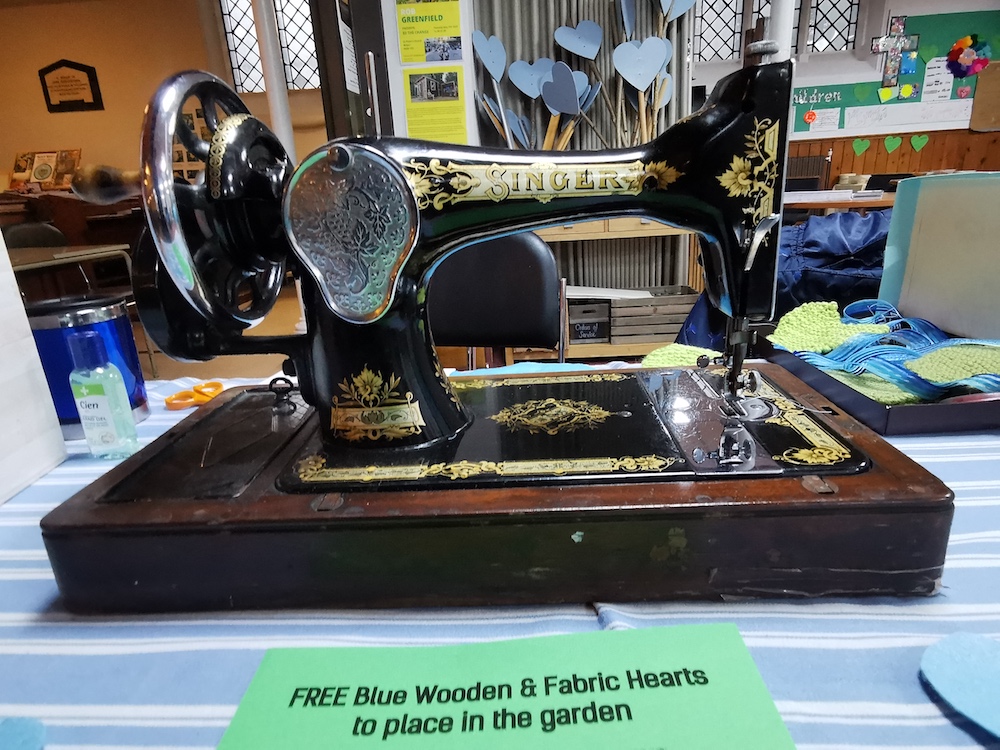
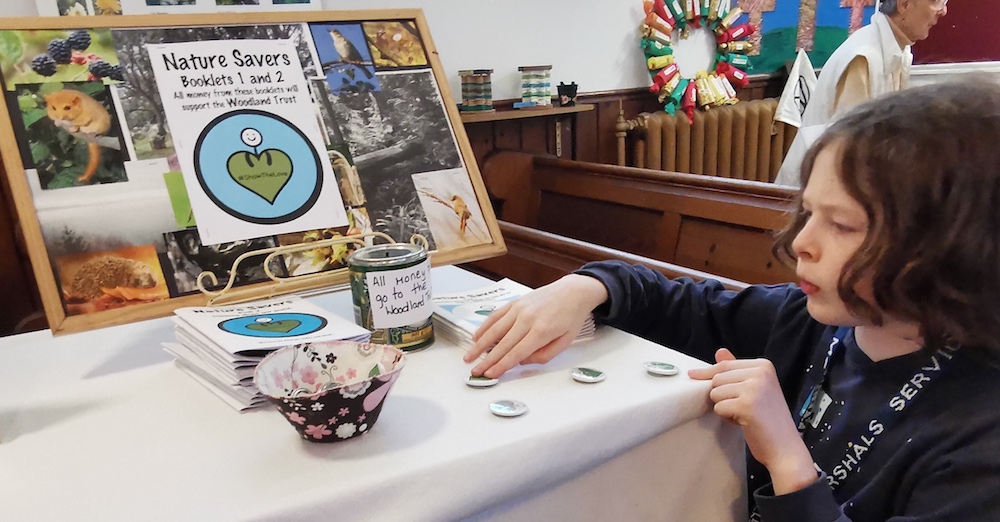
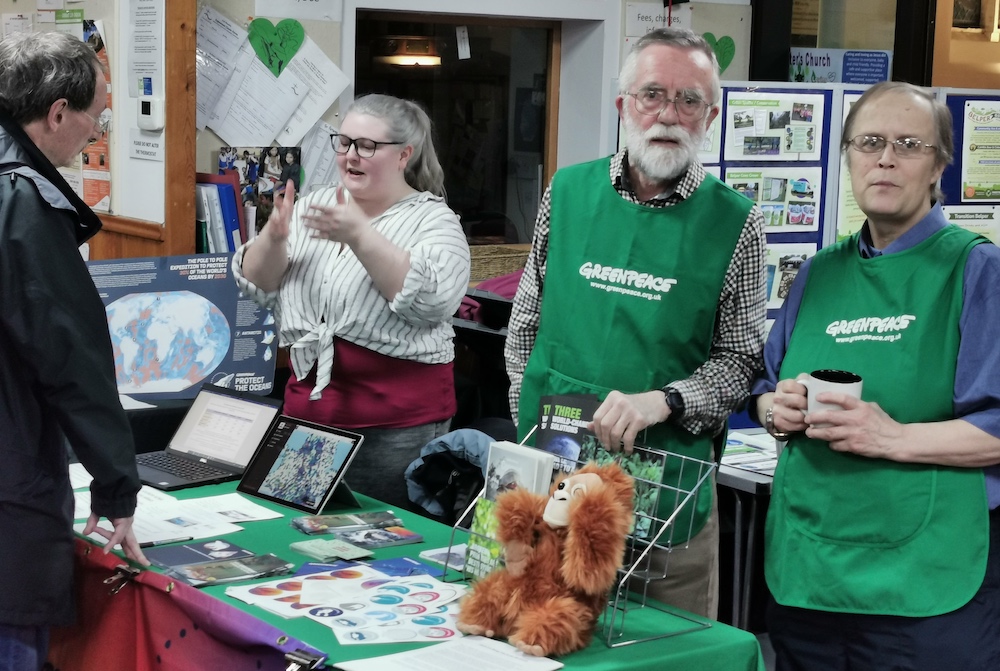
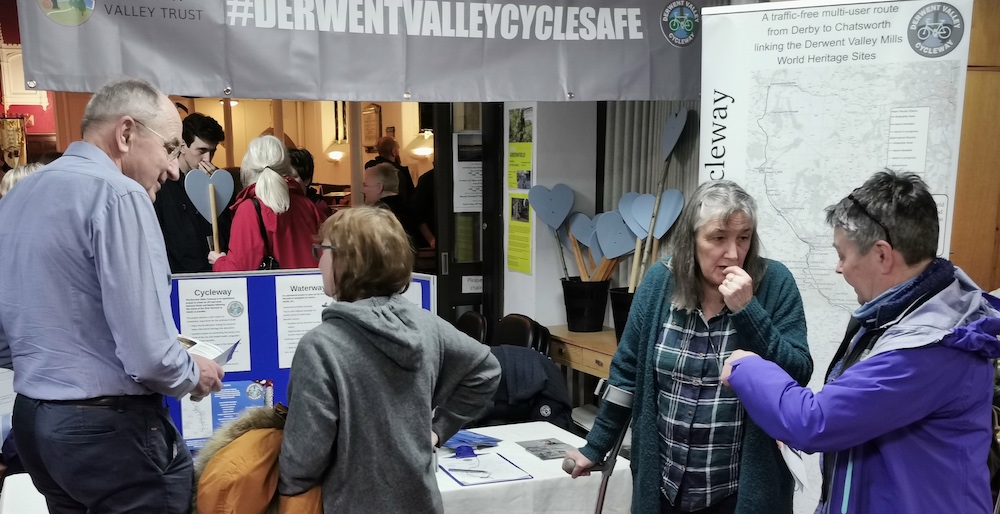
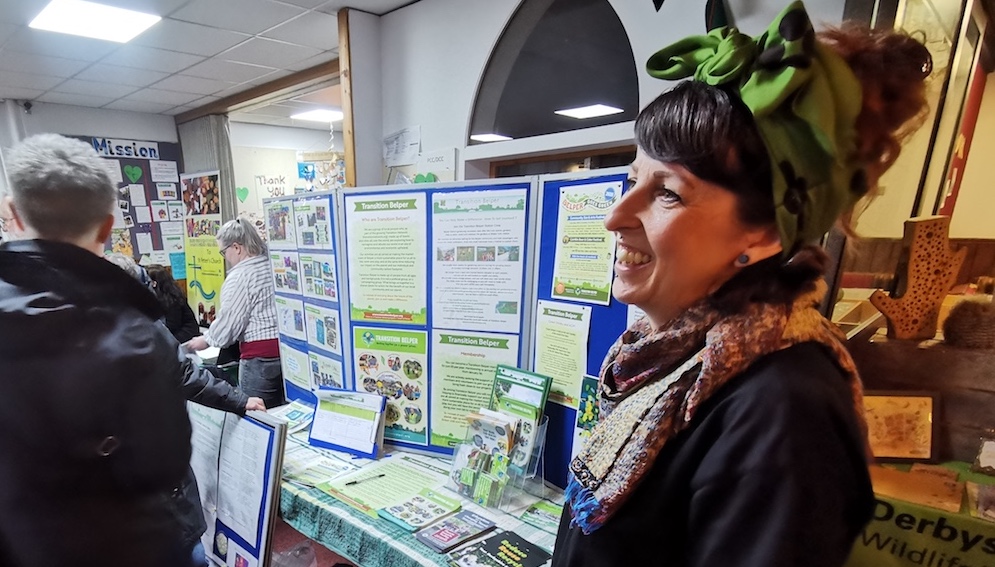
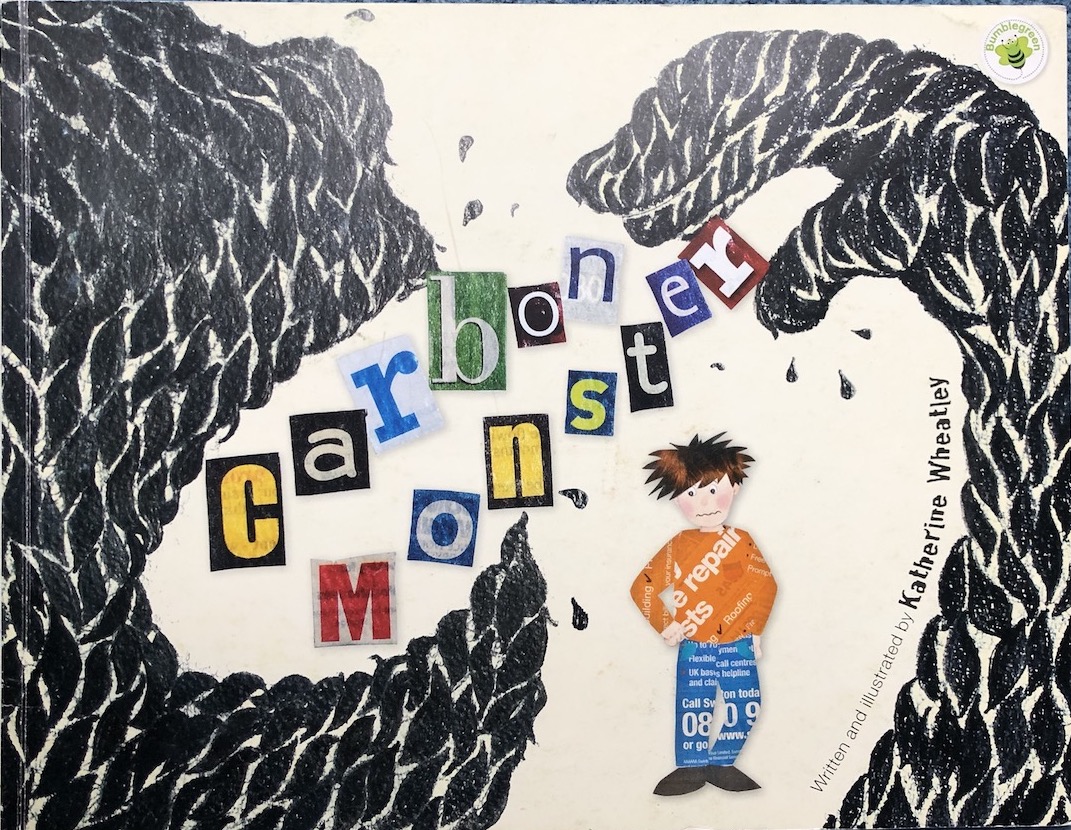
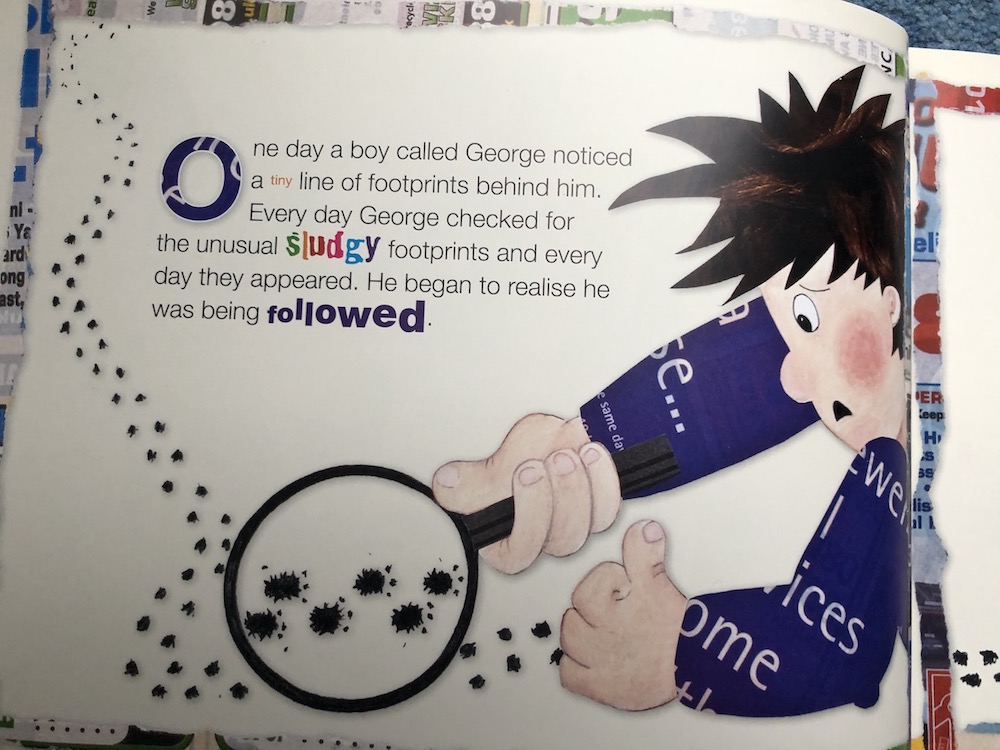 There was an opportunity for anyone of any age to print a design of their choice with Jane a member of
There was an opportunity for anyone of any age to print a design of their choice with Jane a member of 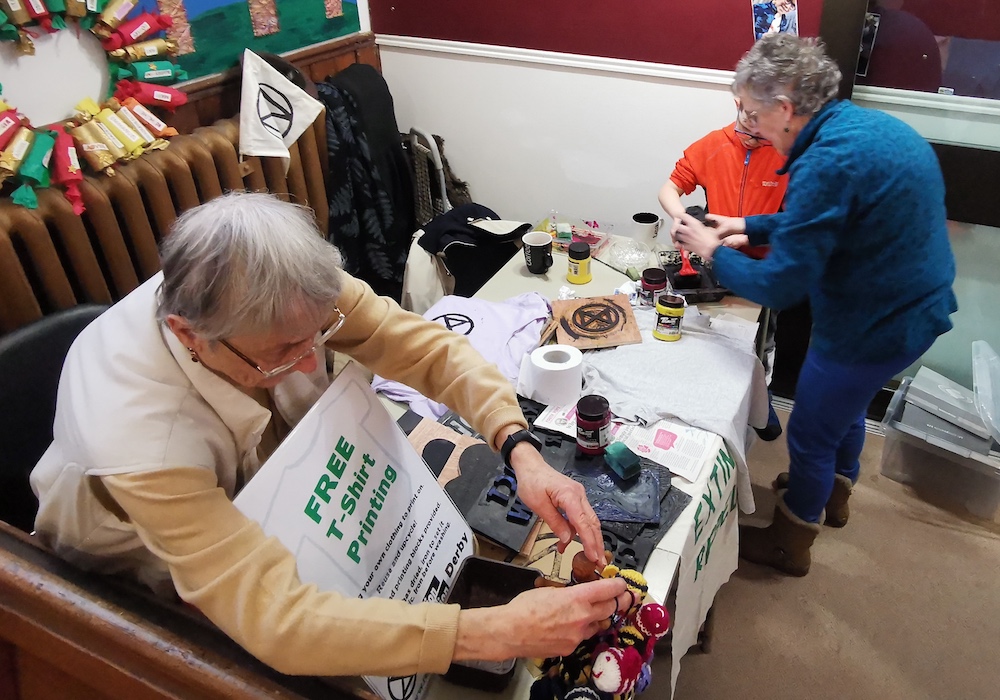 Kim and Heather had lots of information and examples of sustainable fabrics such as wool, linen and flax. Heather had examples of yarn she had spun from banana skins and mint tops and
Kim and Heather had lots of information and examples of sustainable fabrics such as wool, linen and flax. Heather had examples of yarn she had spun from banana skins and mint tops and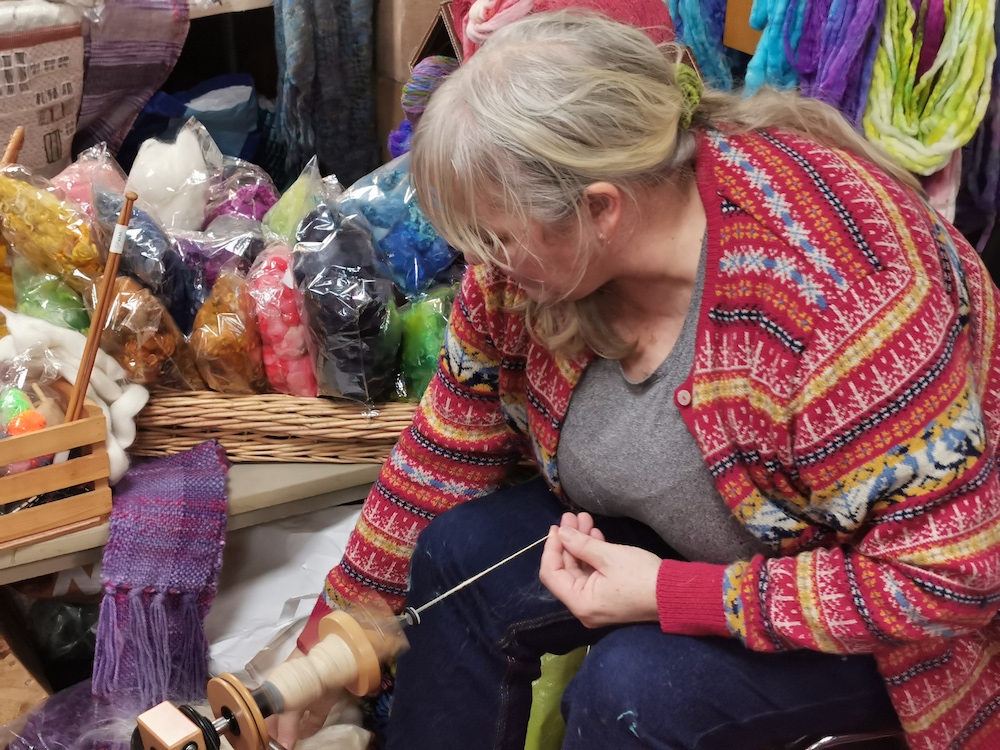 There was a cafe area and plenty of time for people to chat.
There was a cafe area and plenty of time for people to chat.